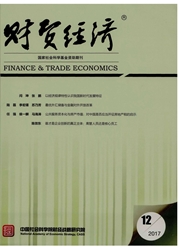

 中文摘要:
中文摘要:
本文将环境规制、污染累积与经济增长纳入统一的理论框架中,分析了不同发展阶段、不同强度环境规制政策作用下的污染治理效应与经济增长特征。结论认为,污染治理方面,高强度环境规制通过增加污染排放的边际成本约束了污染型企业的排放行为,低强度环境规制未能抑制污染排放对环境的边际损害,随着污染的累积,低强度环境规制在污染治理中的作用会逐渐失效。经济增长方面,高强度的环境规制能够激发污染型企业的“创新补偿”效应,使得经济增长中的环境规制效应由“短期损失”向“长期收益”转化,而低强度或较弱的环境规制难以刺激污染型企业进行技术创新,不能促进长期经济增长。在治理环境污染和促进经济增长方面,提高环境规制强度符合“利当前”并“惠长远”的目标。
 英文摘要:
英文摘要:
By adding the environmental regulation, pollution accumulation and economic growth into a unified analytical framework, this paper analyzes the pollution control effects and economic growth features under different environmental regulation policies during different development stages. The results show that in terms of pollution control, the high intensity environmental regulation policy makes effective constraints on the emission behavior of polluting enterprises through increasing the marginal cost of pollution emission. On the contrary, the low intensity environmental regulation policy does not restrain the marginal damage of pollution emission on environment. The function of low intensity environmental regulation policy in pollution control gradually becomes invalid. In the aspect of economic growth, the high intensity environmental regulation policy can stimulate "innovation compensation effects" of polluting enterprises and make the environmental regulation effects convert from "short-term losses" to "long-term gains". By contrast, the low intensity environmental regulation policy cannot stimulate the technology innovation of polluting enterprises and thus does not make contribution to the long-term economic growth. In a word, in terms of environmental pollution and economic growth, enhancing the intensity of environmental regulation can address both current and long-term needs.
 同期刊论文项目
同期刊论文项目
 同项目期刊论文
同项目期刊论文
 期刊信息
期刊信息
